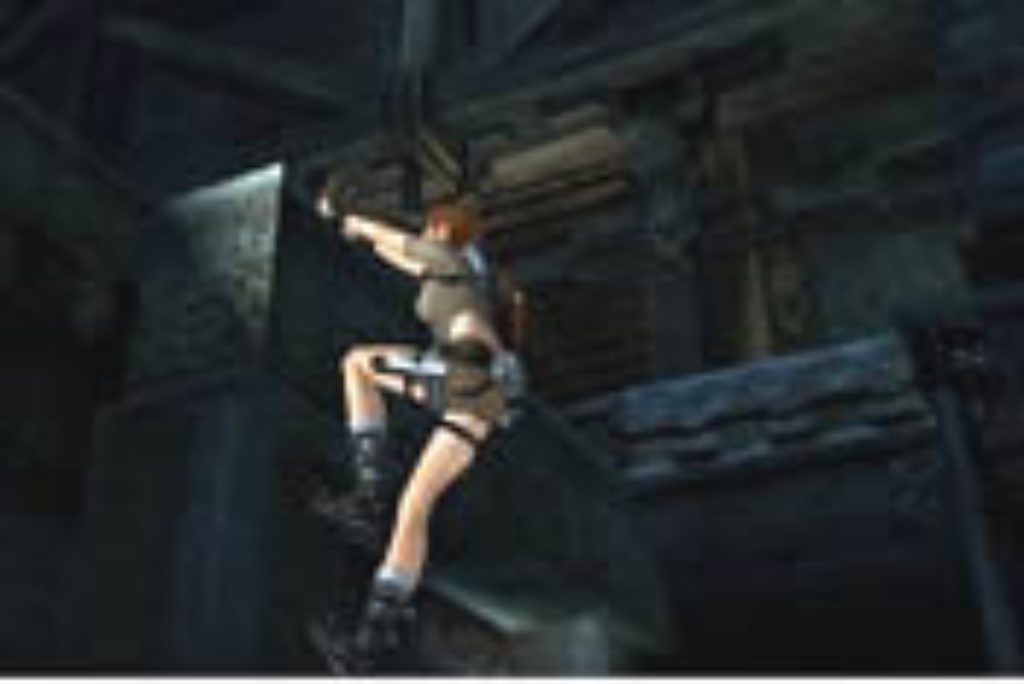
Lara Croft began strutting her stuff back in 1996 when a small British company set the gaming world back on its heels with the first Tomb Raider game. They had created an “in-your-face” female character whose edgy attitude was matched only by her athletic agility. Everyone was bowled over by this new 3-D game design and its possibilities (not to mention Lara’s bosomy form in skintight shorts and T-shirt). Over the 10 years since, Lara’s iconic status has remained strong in movies, comics and action figures, but the games haven’t held up as well. The play became clunky, fans grumbled, and it looked like Lara had spelunked her last tomb.
Enter Lara Croft Tomb Raider: Legend, the game software developer Crystal Dynamics hopes will be a comely comeback for Ms. Croft. Will it work? Will Lara beat the odds, pummel extinction and rise again?
The Keys to the Kingdom
As all avid action/adventure gamers know, a game’s enjoyability can usually be found in three key areas—story, looks and controllable action. The folks at Crystal Dynamics have decided to approach the new Tomb Raider story by simply ignoring past story lines altogether. (Probably a good thing, considering.) They tell a tale, with brisk movie-like pacing, of Lara’s search to find an explanation for her mother’s demise. In flashback, we see a 10-year-old Lara and her mom as they crash-land into a mysterious mountainside. The two miraculously survive and find a strange apparatus that Lara accidentally activates. Mom is pulled into a spinning mystical vortex and disappears.
Twenty years later, the adult Lara has heard news of a relic in Bolivia that might pertain to her mother’s mystery. Of course, there are vicious bad guys (profanity sprinkling their dialogue) who seek the precious piece, too. So Lara must scale unscalable mountains, solve the puzzles of the ancients and fight her way to the promising artifact. What she finds leads her across the globe and eventually to the tomb of … King Arthur.
The world of Legend is panoramic and exotic. For example: Lara dodges flying blades in dank underground Peruvian tombs, puzzles her way through a crumbling military outpost in Siberia and swan-dives from balustrade to flagpole off 40-story rooftops in a sparkling Tokyo. As beautiful as the scenery may be, however, the interaction with these environments can sometimes seem restrictive. Other games let you touch and pick up almost anything you find, but with this one, if you can move it, you’d better use it.
Nevertheless, the game’s controls work well. The puzzles and other obstacles demand that Lara perform all manner of high-flying acrobatics (including a new somersault), and the movement mechanics are fluid with a learning curve that’s relatively easy. A drawback would be the combat mode. Although Legend is primarily an explore-and-solve-puzzles kind of game, there is a lot of violence involved.
Lara is constantly defending herself against human and animal attackers. She uses her pistols and any other weapons that some enemy might drop. The gun targeting control can drive you crazy as it locks on a truck or a rock instead of the enemy standing next to you. But for my money, programmers working harder to perfect Lara’s aim isn’t the answer. It’s cutting back on the gunplay to begin with. I know bullets and bombs are a Tomb Raider staple, but wouldn’t it be nice if Lara didn’t mow down another gang of faceless minions?
And What About Lara?
With advancements in CG design this is the most realistic Lara Croft ever. And that makes her exaggerated figure even more of an issue than it was already. Wearing a wardrobe of midriff and cleavage-baring outfits, she flaunts her catlike, sexy athleticism. Somewhat at odds with her sexualized posture is Lara’s driven professionalism. She just wants to get the job done and would identify completely with Jessica Rabbit’s famous line, “I’m not bad, I’m just drawn that way.” Indeed, you can dress her in a variety of outfits, but there’s never any sneering jokes or leering camera angles. Not that that fully counters the effect Lara’s overt sexiness has on her mostly male admirers.
In other areas, Legend stays above the fray for the most part, steering clear of sex, drugs and dark rock ‘n’ roll, although it does take some odd twists and turns at times. A magical creature called the Unknown Entity inexplicably attacks Lara and eventually is mystically intertwined with her friend (it’s not clear if the creature possesses the friend or if she controls it). There is also a tie-in to King Arthur and an ancient magical sword (possibly Excalibur).
Coming Back to the Comeback
So, now we’re back to the question: How does Lara fare in her comeback caper? Well, the game play is fluid and engaging, but that answer avoids the more pertinent question: How much virtual skin or shoot ’em up violence is too much?

After spending more than two decades touring, directing, writing and producing for Christian theater and radio (most recently for Adventures in Odyssey, which he still contributes to), Bob joined the Plugged In staff to help us focus more heavily on video games. He is also one of our primary movie reviewers.